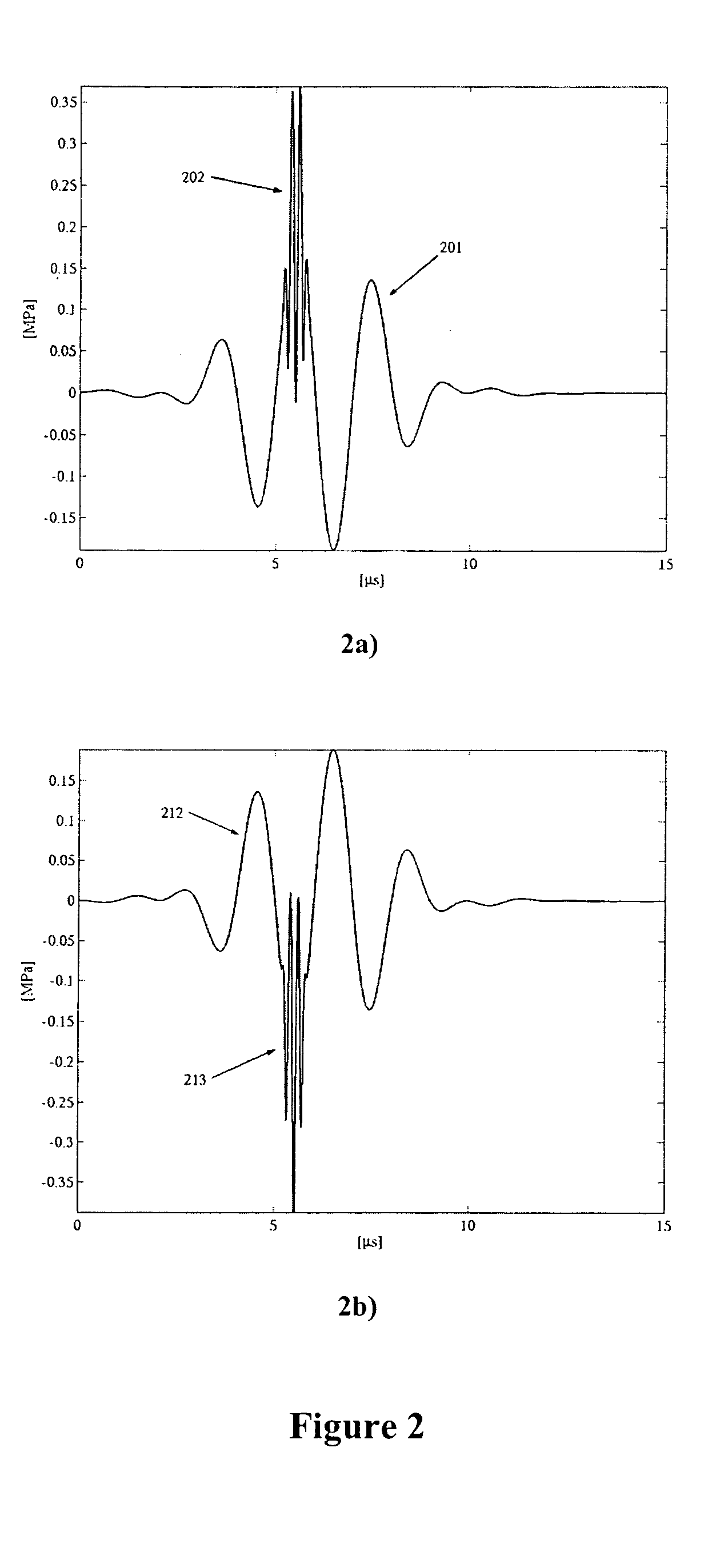Ultrasonic contrast agent detection and imaging by low frequency manipulation of high frequency scattering properties
a technology of high frequency scattering and contrast agent, applied in diagnostics, applications, reradiation, etc., can solve the problems of high transmission amplitude, low image resolution typical obtained with harmonic imaging, and the destruction of contrast agent bubbles
- Summary
- Abstract
- Description
- Claims
- Application Information
AI Technical Summary
Problems solved by technology
Method used
Image
Examples
Embodiment Construction
[0037] The invention will now be described in more detail with reference to the figures.
[0038] For small amplitude radius excursions, the mathematical equations governing contrast bubble oscillation can be linearized and we obtain the following transfer function from drive pressure to radial bubble displacement 1 H 1( ) =12 - 1 - i d where d =b0 m,0 2 = s m , = 0
[0039] Here, .omega. is the angular frequency and .omega..sub.0 is the resonance frequency of the bubble while s is the stiffness of the gas and shell, m is the inertia of the surrounding liquid, and d is a damping factor of the resonant system.
[0040] The absolute value and phase angle of H.sub.1(.OMEGA.) is shown in the upper and lower panel in FIG. 1a, respectively. In the lower panel, we see that for drive frequencies well below resonance the displacement is .pi. out of phase with the driving pressure. For frequencies well above resonance the bubble responds differently and the displacement and drive pressure are now in p...
PUM
 Login to View More
Login to View More Abstract
Description
Claims
Application Information
 Login to View More
Login to View More - R&D
- Intellectual Property
- Life Sciences
- Materials
- Tech Scout
- Unparalleled Data Quality
- Higher Quality Content
- 60% Fewer Hallucinations
Browse by: Latest US Patents, China's latest patents, Technical Efficacy Thesaurus, Application Domain, Technology Topic, Popular Technical Reports.
© 2025 PatSnap. All rights reserved.Legal|Privacy policy|Modern Slavery Act Transparency Statement|Sitemap|About US| Contact US: help@patsnap.com



